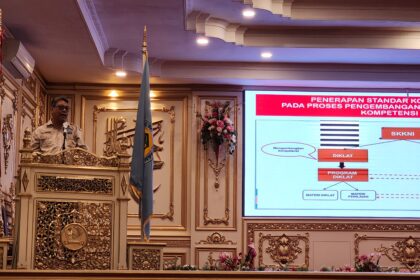[ad_1]
Scientists may have discovered why men tend to be at greater risk from Covid-19 than women – and it is largely to do with a protein that effectively opens the gate for the virus to infect normal cells.
Whereas it was previously thought that the higher rate of severe infection in men was perhaps due to lifestyle – they tend to pay less attention to their health, smoke more and eat less nutritiously than women – it appears to have more to do with men having higher levels of a protein called TMPRSS2.
The discovery was made after scientists in the US and Cyprus developed a mathematical model, originally developed for cancer research, to show how Covid-19 progresses. Â
Triantafyllos Stylianopoulos, associate professor of mechanical engineering and head of the Cancer Biophysics Laboratory at the University of Cyprus, said: “Even though the immune response in females might not be as vigorous as in males, females exhibit lower TMPRSS2 levels on the cell surface, which the virus uses to enter the cells.
“As a result, viral entry into cells is reduced, which can explain the improved outcomes in females infected by the new coronavirus and the lower death rates.â€
Since the beginning of the pandemic, men have been shown to be at greater risk of developing severe Covid-19 infections and ultimately dying from the disease than women. A recent study of more than 3 million people in 47 countries showed that males were 2.84 times as likely to be admitted to an intensive care unit and 1.39 times as likely to die from Covid-19 than females, despite similar rates of infection.
Now scientists are closer to unraveling Covid’s mysteries thanks to the model developed by researchers at Massachusetts General Hospital (MGH), in collaboration with investigators from Brigham and Women’s Hospital and the University of Cyprus.
The mathematical model is based on biology that incorporates information about the known infectious machinery of SARS-CoV-2, the virus that causes Covid-19, and the potential effects of various treatments that have been tested in patients with the disease.Â
The model is the outcome of research supported in part by the Immuno-Predictor and CancerFingerPrints projects for which Professor Stylianopoulos received funding from the European Research Council and the Cyprus Research and Innovation Foundation.
After the basic data were established last September, work concluded in November and the scientists’ findings were published on January 19 in the journal Proceedings of the National Academy of Sciences of the United States of America.
Stylianopoulos said: “Having such a complex and powerful model allowed us to investigate the progression of the disease in young and older patients, males and females as well as people with pre-existing conditions that are of high risk to develop severe Covid-19, such as obese, diabetic and hypertensive patients.
“We were also able to predict the effect of the various treatments that have been used for the treatment of Covid-19 patients, including anti-viral, anti-inflammatory and anti-coagulation drugs and corticosteroids.â€Â    Â
Data from the model found that in all Covid patients, the viral load increased during early lung infection before potentially heading in different directions, depending on levels of key immune guardian cells, called T cells.
T cells are the specialized responders of the immune system and effectively coordinate other aspects of immunity. The T cell response is known as adaptive immunity because it is flexible and responds to immediate threats. Ironically, men tend to have more robust adaptive immunity than women.
In patients younger than 35 who have healthy immune systems, a sustained recruitment of T cells occurs, accompanied by a reduction in viral load and inflammation and a decrease in nonspecific immune cells. All of these processes lead to a lower risk of blood clots and the restoration of oxygen levels in lung tissues. These patients tend to recover.
In contrast, people who have higher levels of inflammation at the time of infection – such as those with diabetes, obesity or high blood pressure – or less effective adaptive immune responses tend to have poor outcomes.Â
“A main conclusion of our study is that disease progression and outcome of any treatment largely depends on the response rate of activated CD8+ T cells, a type of white blood cells and part of the adaptive immune system. CD8+ T cells specifically kill the cells infected by the virus and play a major role in virus clearance,†Stylianopoulos said.Â
“Also, important in the progression of the disease is the control of the innate immune system response, which is non-specific and if it goes out of control can cause a steep increase in inflammatory cytokines and recruitment of further cells of this type of immune system. This leads to a vicious circle that can cause lung damage.
“A sustained activation of CD8+ T cells along with the control of the populations of the non-specific cells of the innate immune system is associated with a decrease in viral load and inflammation. This, in turn, will improve arterial oxygen saturation levels due to the decreased blood vessel damage and micro thrombosis.
“Therefore, antiviral or anti-inflammatory drugs that were first employed for the treatment of Covid-19 might not lead to better clinical outcomes compared to drugs that support the adaptive immunity, such as immune checkpoint inhibitors or drugs that suppress the innate immune system such as dexamethasone. Further, anti-coagulation drugs, such as heparin, seems to be highly beneficial.â€Â Â
After the latest breakthroughs, Stylianopoulos and his colleagues are developing the model and plan to use it to examine the dynamics of the immune system in response to different types of Covid-19 vaccines as well as cancer-specific co-morbidities that might require special considerations for treatment.
[ad_2]
Source link










